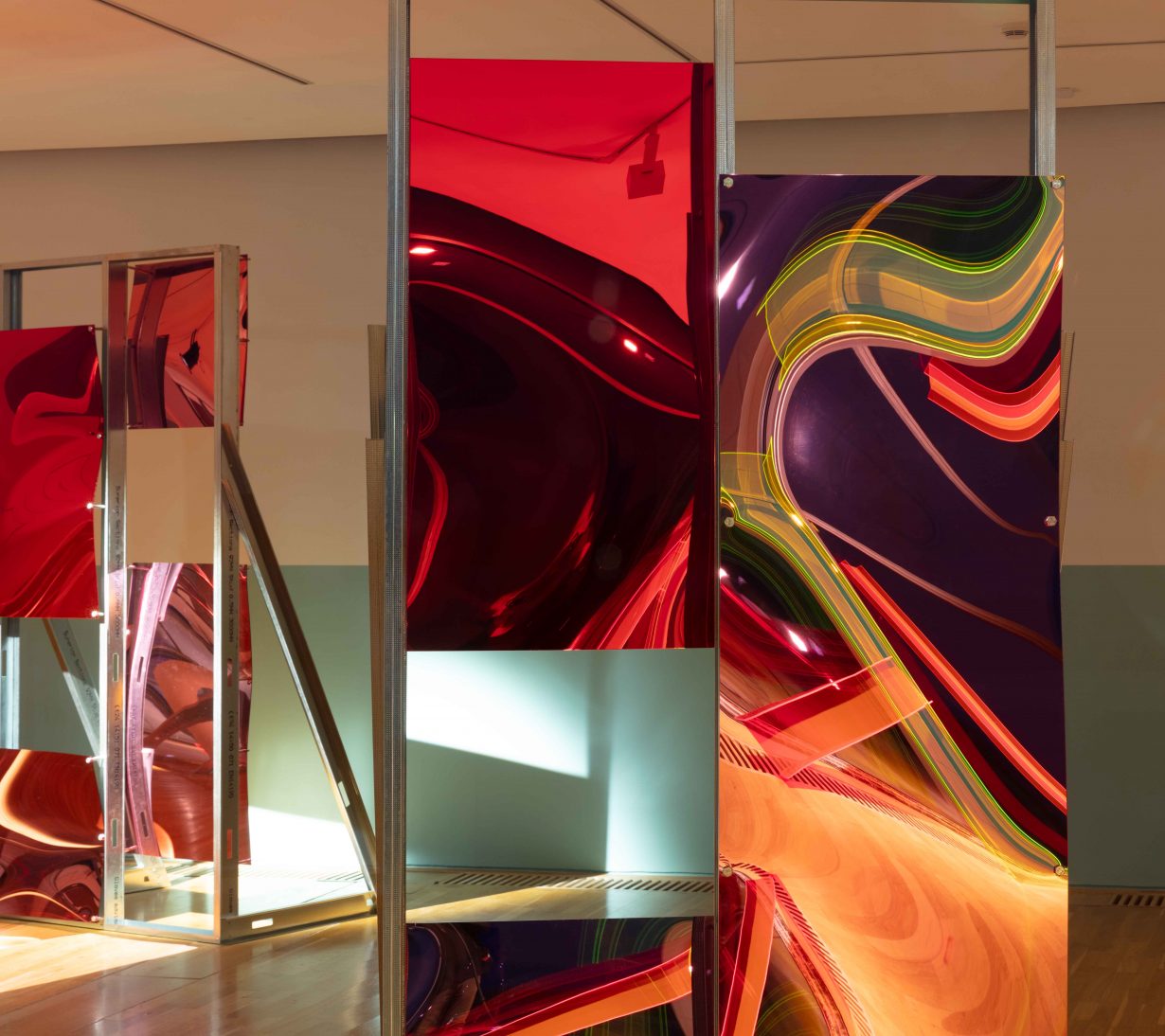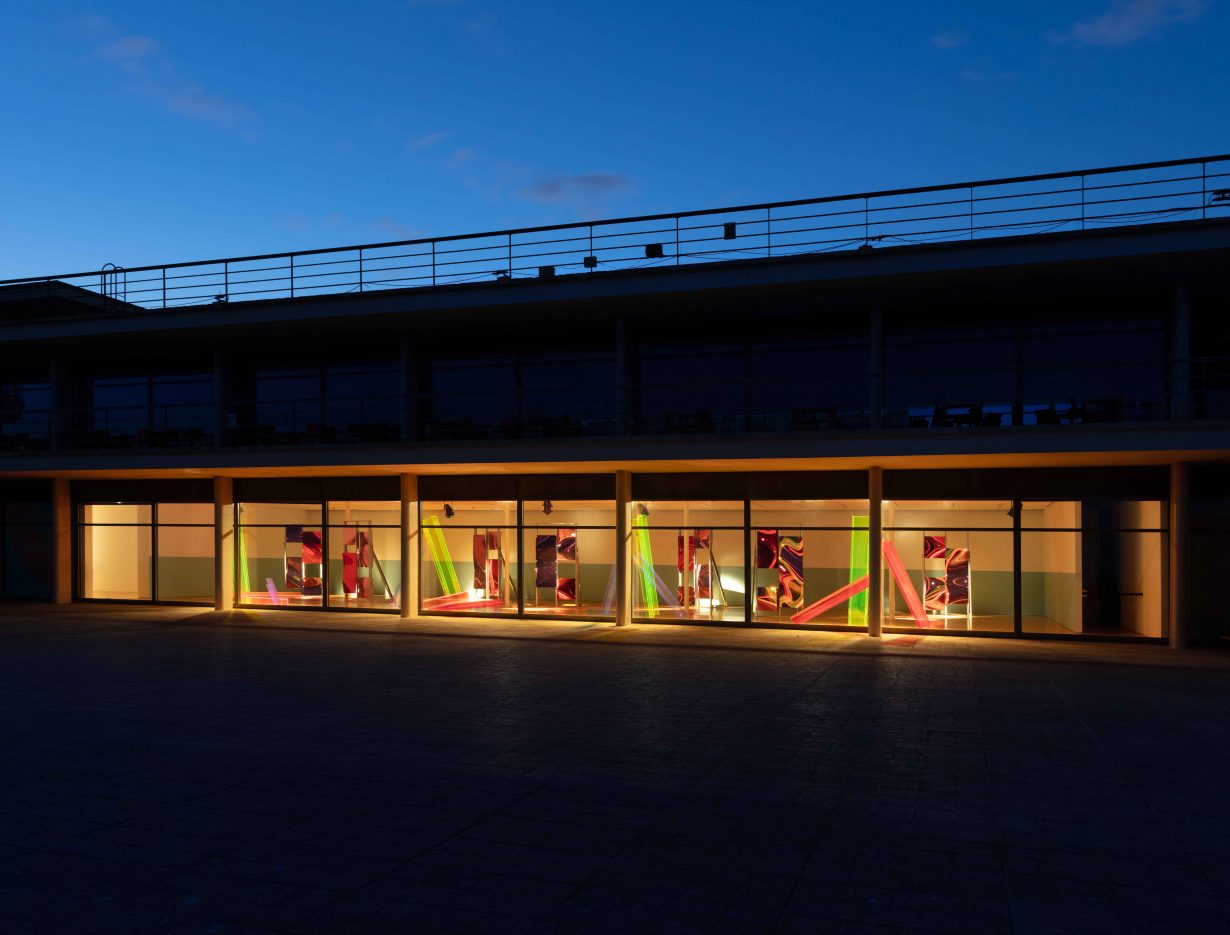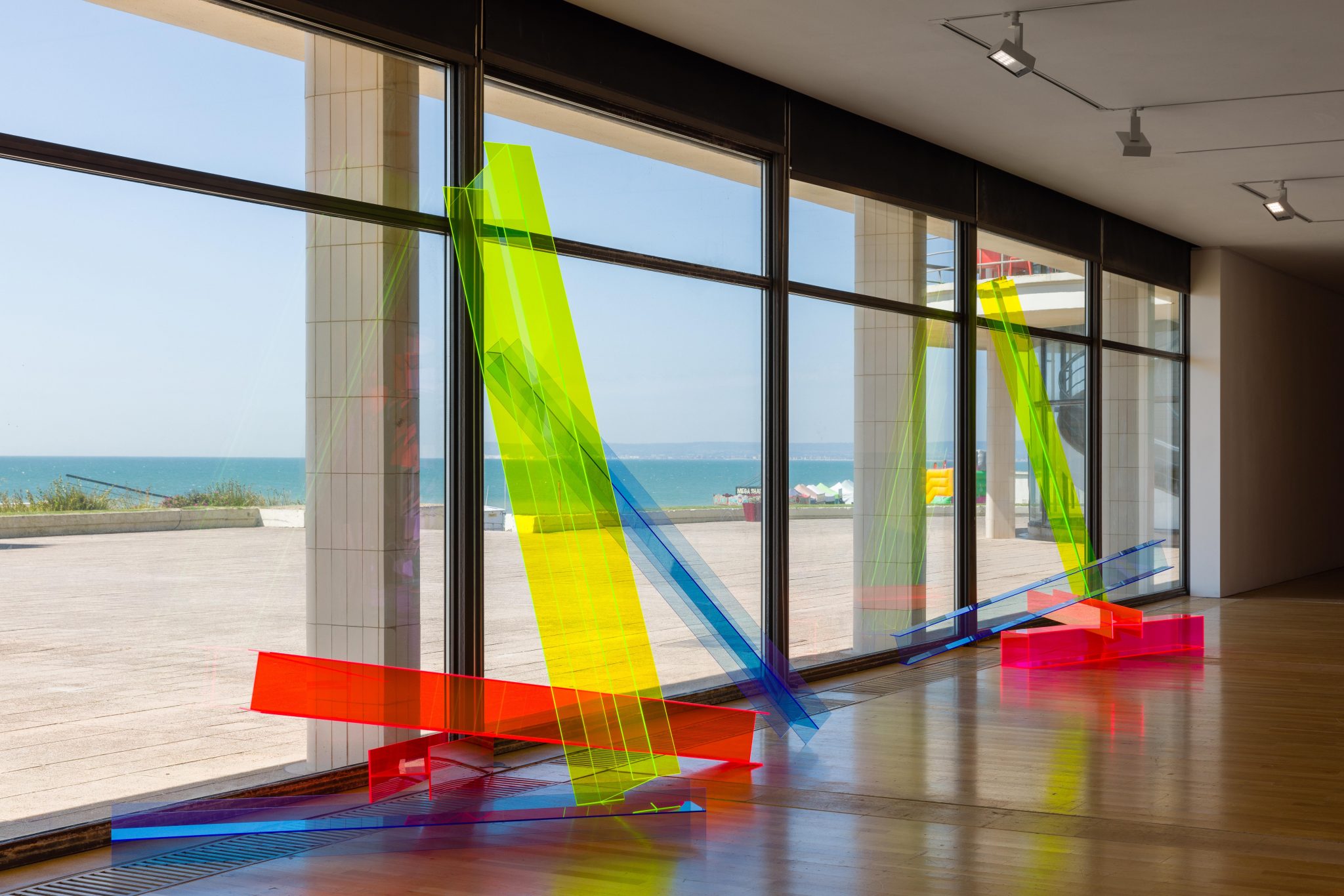The artist’s sculptural installations in Site Lines at De La Warr Pavilion, Bexhill-on-Sea, capture the impermanence of the visible
Site Lines (2024) is an installation that occupies the entire ground floor of this modernist masterpiece by Erich Mendelsohn and Serge Chermayeff. The building faces out to sea, liner style, with windows that extend fully from ground to ceiling, and where four (separate though similar) sculptures rest against the glass in a row. Each work comprises four or five rectangular plexiglass structures in yellow, blue and red that lean against one another like toy girders, somewhat in the manner of abandoned construction materials. The dominant vertical forms that almost reach the top of each windowpane are yellow; the sun highlights their lines, giving a near neon effect. These constructions might be imagined as a playful mashup of iconic minimalists such as Donald Judd or Dan Flavin, but one that has been rid of highfalutin claims to daunting seriousness, thanks to the sculptures’ Stickle Brick chime.
Taken alone, this would be a pleasing enough intervention, given the changing nature of the South Coast sunlight, the fluctuations in cloud cover making the colours and lines of each block mutate by the minute. But what gives Kasten’s installation real heft, as regards serious stimulation of the visually powered neurons in one’s occipital cortex, are the other fabrications in the room. A handful of large freestanding structures, like oversize dresser mirrors, are set at different angles from one another. Each mounted with reflective plastic in carmine and lilac, their surfaces are curved so that the viewer’s reflection is altered in the manner of a funhouse distorting mirror. But the self is quickly relegated, refused even, by the concave and convex sections of each plastic screen, as the eye is confronted by what appears to be a near infinity of variations in shape depending on the incline of the view. A tiny shift in balance and the patterns change, as would happen when twisting a kaleidoscope. These beg us to caress the details.

The looping forms of the building itself are highlighted through the reflections – especially its famed central stairwell. Enormous stretched scarlet S-shapes bend and spiral in the plastic as your gaze shifts by millimetres; lines expand and contract, conjuring sights suggestive of racetracks, whirlpools, flames, the lapidary features of cut jewels and stones. These reflections might be interpreted as an eternally mutating group of photographs, and it comes as no surprise to learn from the handout accompanying the show that Kasten is a great fan of Bauhaus photographer Moholy-Nagy’s experiments with photograms and plexiglass. The connections that can be made between the works of Kasten and Moholy-Nagy, as well as the Weimar-era influence on the De La Warr itself, click together with pleasing precision, like when the last piece of Lego can be fitted within some fearsome architectural model.

Kasten, now in her late-eighties, delights in warping our sense of the real, as her surfaces dance with the minute-to-minute variations of light bouncing off the Channel waters outside. Kasten alters our perceptions of constructions and assembly by making sculptures with seemingly little holding them together; she plays on the paradoxes of stiffness and flexibility. As the artist comes from Chicago, you can’t help but wonder about the city’s influence on her practice: its glass towers, their reflections and inversions and through-the looking-glass worlds. There’s a determined generosity at work here that asks us, calmly, to slow down and look this way, now that. Kasten fixates on the ineluctable modality of the visible, highlighting its persistent impermanence.
Site Lines at De La Warr Pavilion, Bexhill-on-Sea, through 8 September
